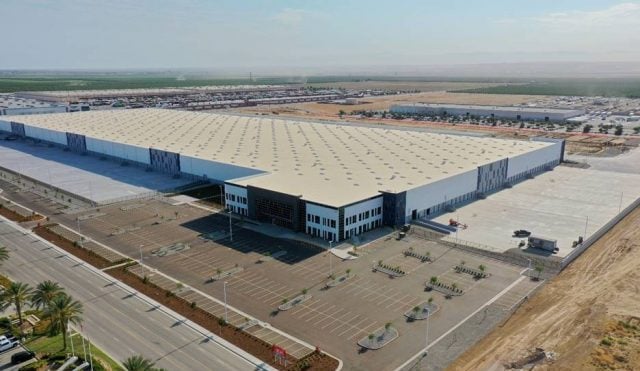LOS ANGELES—The industrial rate in Los Angeles is falling to historic lows. It is all due to a confluence of factors: the ecommerce market has taken off; there is no land left for development; and Los Angeles has access to the two largest ports in the country. It all adds up to an incredibly active industrial market, but where is there to go in a market that is already maxed out? It was the question that we posed to Chuck Littell, VP at Colliers International and an industrial expert, and he said that with no historic precedent, he doesn't know.
“We don't know where we go from here because it has never been this tight,” Littell tells GlobeSt.com. “I think it got down to 2.6% in 200, which is the height of the last cycle. So, we are now down to half of the vacancy rate from the last cycle.” The vacancy rate did hit near 1% in 2014, before new deliveries boosted it back up. Since, there has been limited space to develop new product and increasing demand as a result of growth in ecommerce.
While Littell says that there is no specific lead time for tenants looking to land space in the L.A. market, it is clear that household name tenants are winning these deals –and can afford to pay the increasing rental rates, which have gone up 50% or 60% in the last five years. “You could call it industrial gentrification,” says Littell. “The Brickyard is a perfect example of that. That property is in a market that would not have been considered desirable, and 10 years ago you would have had trouble getting anyone to build there. Today, a national developer is building on that property, and half of it was leased to UPS.”
The tight market isn't only relieving opportunities for tenants. Developers are also missing out on opportunities to renovate older product and truck yards, because tenant demand is so high that all product is being leased as is. “There is so much demand for older product, there is not going to be a lot of opportunities for redevelopment,” adds Littell. “There is always pressure for older properties to be torn down and redeveloped, but there is so much demand for that product in this market.”
LOS ANGELES—The industrial rate in Los Angeles is falling to historic lows. It is all due to a confluence of factors: the ecommerce market has taken off; there is no land left for development; and Los Angeles has access to the two largest ports in the country. It all adds up to an incredibly active industrial market, but where is there to go in a market that is already maxed out? It was the question that we posed to Chuck Littell, VP at Colliers International and an industrial expert, and he said that with no historic precedent, he doesn't know.
“We don't know where we go from here because it has never been this tight,” Littell tells GlobeSt.com. “I think it got down to 2.6% in 200, which is the height of the last cycle. So, we are now down to half of the vacancy rate from the last cycle.” The vacancy rate did hit near 1% in 2014, before new deliveries boosted it back up. Since, there has been limited space to develop new product and increasing demand as a result of growth in ecommerce.
While Littell says that there is no specific lead time for tenants looking to land space in the L.A. market, it is clear that household name tenants are winning these deals –and can afford to pay the increasing rental rates, which have gone up 50% or 60% in the last five years. “You could call it industrial gentrification,” says Littell. “The Brickyard is a perfect example of that. That property is in a market that would not have been considered desirable, and 10 years ago you would have had trouble getting anyone to build there. Today, a national developer is building on that property, and half of it was leased to UPS.”
The tight market isn't only relieving opportunities for tenants. Developers are also missing out on opportunities to renovate older product and truck yards, because tenant demand is so high that all product is being leased as is. “There is so much demand for older product, there is not going to be a lot of opportunities for redevelopment,” adds Littell. “There is always pressure for older properties to be torn down and redeveloped, but there is so much demand for that product in this market.”
Want to continue reading?
Become a Free ALM Digital Reader.
Once you are an ALM Digital Member, you’ll receive:
- Breaking commercial real estate news and analysis, on-site and via our newsletters and custom alerts
- Educational webcasts, white papers, and ebooks from industry thought leaders
- Critical coverage of the property casualty insurance and financial advisory markets on our other ALM sites, PropertyCasualty360 and ThinkAdvisor
Already have an account? Sign In Now
*May exclude premium content© 2024 ALM Global, LLC, All Rights Reserved. Request academic re-use from www.copyright.com. All other uses, submit a request to [email protected]. For more information visit Asset & Logo Licensing.









